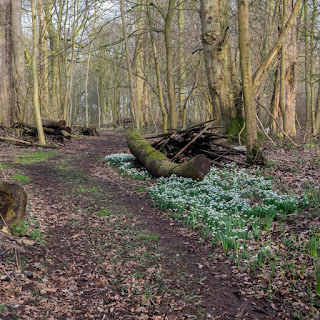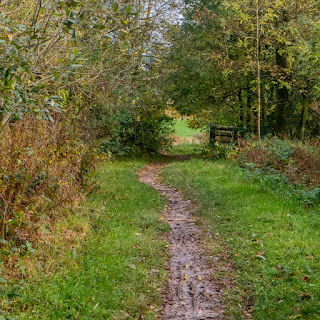The Travel Photographer of the Year Exhibition 2016
TPOTY began in 2002 when Chris Coe, a professional travel photographer, was becoming increasingly frustrated by the growing attitude amongst image buyers and picture editors towards travel images. So many photographers were taking great images, but they weren't being used because they didn't conform to the rather predictable pretty pictures which most publications gravitated towards. Chris went on to set up TPOTY as a foil to this practice in order to celebrate and recognize the breadth of subjects covered by travel photographers and demonstrate the creativity and skills required to take truly outstanding travel images.The exhibition is on the ground floor of the central atrium of Princess Quay. Images were displayed on large curved display boards and generally had white borders with a thin black line around.
The competition comprises several categories, some of which are listed below:-
Faces, People, Encounters
The winner of this category was the Australian photographer Mitchell Kasaschevitch. His winning shot of a Romanian widow preparing pumpkins for the winter particularly attracted me, especially the great concentration on her face. I thought that the similar colours worked well too with the ladies purple jumper and the orange pumpkins being pleasing to the eye. I also liked his image of a Romanian shepherd. He is pictured on a hillside with his sheep with a misty valley behind. An aperture of f4.5 allowed the face to be sharp to draw in the viewer.
Street Culture/New Talent Portfolio
The winner of this section from China was Zhu Jingyi. The expression on his image of a Chinese pancake maker was absolutely fantastic; you could feel the heat from the oven into which he was plunging his arm. I also enjoyed the happy smiling expression on the face of his old man washing beans. I also enjoyed the commended monochrome image of Malaysian photographer Yi Chan Tang of a man and dog sitting outside a shop in KolKata, India with a bicycle going past which was shown with motion blur. Carlos Esteves from Portugal had a highly commended image of a woman walking away from the camera down a narrow side street taken through a doorway.
Colours of the World
Canadian Larrie Louie's shot of Tibetan prayer flags was the winning image in this category. Lighting was subtle and muted and motion blur gives an abstract feel to the shot.
Nature and the Environment
Alessandra Meniconzi's picture of choughs tumbling in the air above a mountainous backdrop was fascinating. I am assuming they were a flock, but as they were nearly silhouettes they looked as though they had been stuck on or photoshopped in. Also in this category was and image of a polar bear by Anette Mossbacher from Germany. I liked the way the bear was small in the image showing it in its habitat. The turquoise blue colour of the ice was fabulous and always wins me over. Another image from this section was a close up of an egret by Jianhui Liao from China. This was an excellent portrait and showed great control of the light.
Overall Travel Photographer of the Year.
The winning images of the competition were both in a different room and also mounted differently. They were very large prints mounted on aluminium (?) with a slight texture. They were by Marcel Van Oosten from the Netherlands and taken in the Louisiana mangrove swamps in America. They were impressive images some of a canoeist in the mangroves, although they were more about the landscape than the canoeist, and a series of a pelican taken from very close with a wide angle lens.
Overall I felt the quality was very high and I enjoyed many of the images that were on show. There was a detailed caption with each image including technical information. Accepted in this competition style of exhibition, but do they give too much information and not leave enough for the viewer to question the image.
Ian Macdonald; Smith's Dock
This body of work came about with the announcement of the closure of the Teeside yard by by British Shipbuilders in 1986. Ian Macdonald and Len Tabner were already collaborating on a book about the Tees estuary which was published in 1989. Smith's Dock was a major part of the life of the river and of the local landscape. Macdonald was commissioned by British Shipbuilders to document the closure and the work was produced from August 1986 until the final closure in November 1987.
The images were taken on a 5x7 field camera using glass plates and a heavy wooden tripod. The images are large black and white prints mounted on cream in either brown wooden or black aluminium frames. Interestingly the aluminium frames were made by men working on the yard. There was a mix of frames throughout the exhibition and in my opinion it would have been better to have all of one type of frame together. It's a pity that they couldn't have all been framed in the aluminium. Of course it is possible that the two sets (?) of images may have been exhibited separately over the years and only brought together for this exhibition. Very detailed captions were next to each image and, perhaps gave too much information for the viewer.
Unsettled; Isabelle Pateer
This body of work documents the impact of change on the small Belgian village of Doel near Antwerp. The village has its roots in medieval times and even has the family house of the painter Rubens, although it is not shown. Today, though, the village has to make way for the expansion of Antwerp Docks and is scheduled for demolition. In fact, in 2008 riot police were sent in to persuade the remaining 200 villagers to move out.
Images are large colour prints in grey frames with no border. I felt that it was a eulogy for a life past and gone. A sad area and sad, overlooked, people. All in the name of progress. As Sarah Maitland says in Gossip from the Forest "Ghosts of a lost way of Life."
I found this a particularly poignant and moving exhibition.
One Carefree Night, Ghetto Prom - Ilvy Njiokiktjien
In the gang-ridden area of Manenberg, Cape Town, schools are forced to close down because it is too dangerous for pupils to walk to them. Most people in Manenberg never finisg high school because they end up in crime. The few that do have one thing in mind: their senior prom. The families of the teenagers save up the whole year to be able to celebrate in style for one carefree night.
I felt that this exhibition portrayed hope in a desperate area. These young people are determined to celebrate their wonderful achievement against all the odds.
Coming Home - Group Show.
This exhibition brought together the work of 13 photographers from Cleveland College of Art and Design whose work revolved around ideas of home, lifestyle, family, friends and environment. Each of the photographers revealed a part of themselves through their images. The photographs show us that not all their journeys are equal or the same, though they all showed that at some point we all think about coming home. I felt that in some there was a bleakness and sadness to them, which I found unsettling. One series portrayed intimate glimpses of the life of an elderly person, perhaps an aging relative.
Saturday Girl
This exhibition was full of life and colour. It was a collection of portraits which explored the many playful and powerful ways we express ourselves. The photographs were taken in a touring studio throughout the UK during 2016 and on into 2017. Young women who wish to be identified as a 'Saturday Girl' are invited to be photographed. This is a project by Dr. Casey Orr, Photographer and Senior Lecturer at Leeds Beckett University School of Art, Architecture and Design.
The images were very large colour prints on matt paper with a narrow white border. They were simply hung with bulldog clips.

































































